What is Agile Project Management?
Agile project management is a flexible approach to project management that results in a collaborative, feedback-rich approach that caters to quick adaptation to change. By adopting agile practices, project managers can continuously improve their work processes and deliver customer value at an increasingly faster pace. In this process, projects deliver value in small deliveries of products called “Features.” Agile project management methodology uses five stages, called the Agile Life Cycle. These phases are Envision, Speculate, Explore, Adapt, and Close.
Traditional VS Agile Project Management Framework
While Traditional methodologies require the user to provide a detailed idea of the exact requirements with respect to the intended software, Agile developers, who truly understand what is agile project management, are more flexible through their iterative work style. Like traditional project management methods, agile is also used for program management. With Agile Development, the user is constantly in the loop, suggesting improvements and reviewing every phase. In many cases, the agile waterfall hybrid method is used. The increased customer involvement in agile project management works on two levels.
- One is that it makes reflective changes easier than Traditional Development, where chunks of the system might have to be dismantled to improve a small part.
- The second is that it increases customer satisfaction drastically.
Waterfall VS Agile Project Management – Key Differences
Let us review the key differences between traditional and agile project management frameworks.
Agile Project Management | Waterfall Project Management |
| It focuses on customer interaction and satisfaction. | It focuses on plans and artefacts. |
| Changes are controlled through adaptive actions. | Responds to change that it is either corrective or preventative. |
| It is a progressive elaboration with release and iterative planning. | It is typically up-from-planning. |
| Agile has self-organizing and cross-functional teams. | There is a top-down management control. |
| Agile project management has a time-boxed delivery | It offers a scope-based delivery. |
| It is customer-oriented. | It is contract-oriented. |
| Embraces uncertainties, using them to steer improvements. | Attempts to identify all risks upfront, with less room for adjustments. |
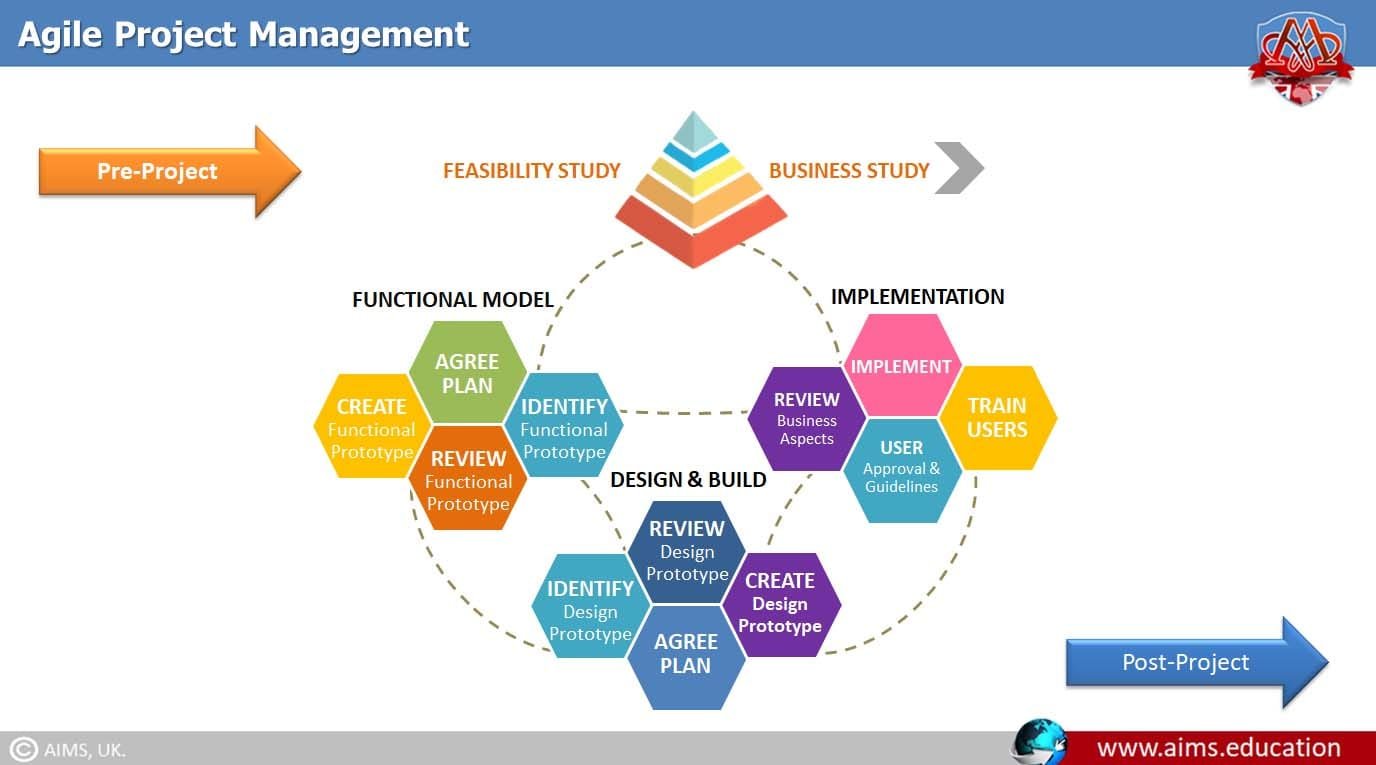
Agile Project Management Methodology
The process of Project Management, according to PMBOK, can be classified in the following way.
- Initiating, occurs only once, of the beginning of a project or phase.
- Planning being iterative, it occurs the beginning of the project, as well as, the beginning of each iteration.
- Executing occurs through iterations, and so execution activity will peak somewhere in the middle of each iteration.
- Controlling is about checking progress against plans, and taking steps to bring things back on track, it would happen hand in hand with execution.
- Closing brings projects to an orderly closure. It typically happens only once, at the end of a project or phase.
Agile Project Management Phases
The various steps in the Agile Project Management Framework and the activities involved in each phase can be classified as follows:
- Envision helps create a high-level vision for the project.
- Speculate helps create a high-level roadmap for the project based on the available information.
- Explore is where the team will start creating and delivering the features.
- The team will constantly Adapt and change its plan based on the feedback it receives about the completed features.
- After the team has generated sufficient value, or whenever the customer has had enough, the project will Close, and the features delivered will be finalized.
1. Envision Phase
Envision Phase in agile project management defines the beginning of the project, like a Kick-off meeting. For shorter projects, Envision and Explore Phases can be combined. It involves Development and Product team members in the process, with a series of collaborative meetings to identify the following:
- What is the customer’s vision for the product?
- What is the scope of the project, and what are its constraints, including the business case?
- Who are the right participants to be included in the project community?
- How will the team deliver the product?
Vision is expressed in Product Vision during the Envision Phase. It has two characteristics.
a. Clarity
- Everybody must be clear about what is being tried to be built, and everyone should have the same understanding.
b. Elevator Statement or Goal
- The Goal is a brief statement designed to impart the project’s intent within two minutes.
Product Vision and Scope
- Possible structures for a visioning exercise are to create an elevator statement or a production vision box.
- The principle of both exercises is to create a statement that describes the future in terms of the desired product.
- This product vision model helps team members pass the elevator test, which requires them to explain the project to someone within two minutes.
- The Product Vision Box contains the product name, Graphic, and product selling points on the Front, a Detailed description on the Back, and Operating Requirements on the Back.
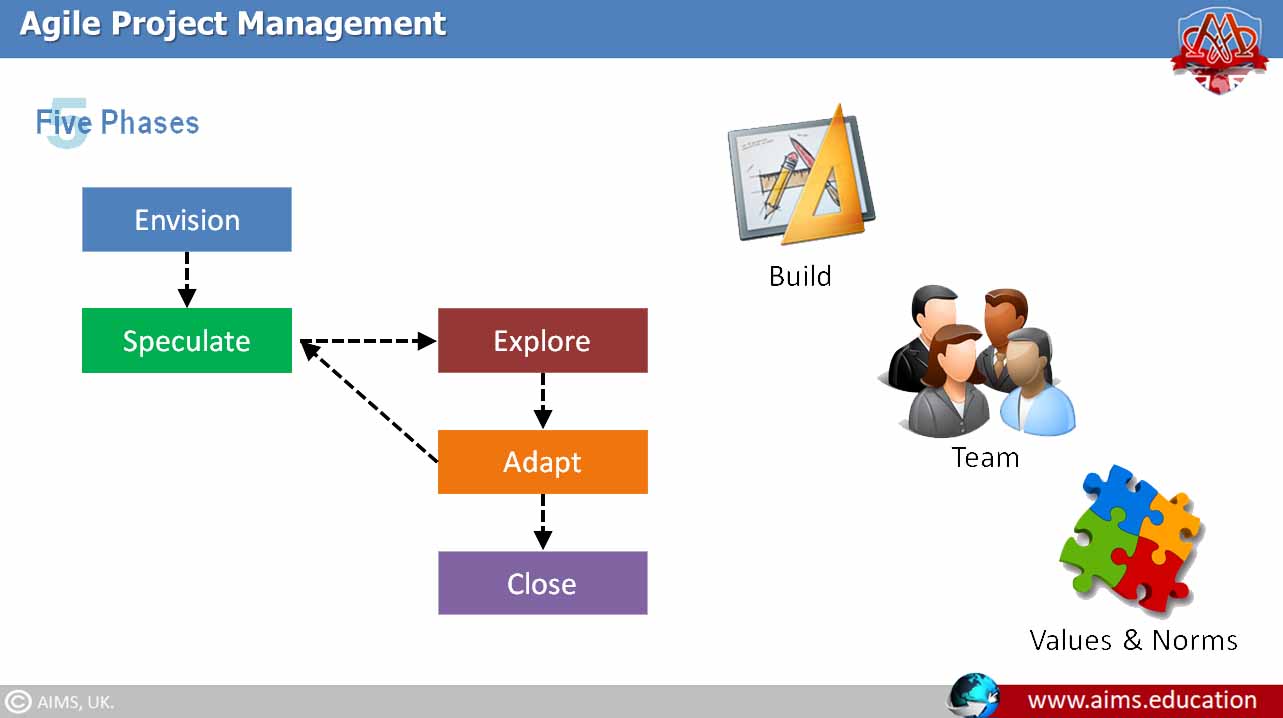
2. Speculate Phase
In the Speculate and Explore Phase, the product vision is translated into backlog requirements, which are user stories. Then, the overall approach to meeting the requirements, including the architecture and/or design characteristics, is found.
The vision of the Product is translated into specific desired features. Each feature is broken down into:
- High-level planning to deliver those features.
- Release Level, all the planned features.
- Wave Level, a subset of planned features.
- Iteration Level, short, time-boxed duration to address a subset of features.
3. Explore Phase
Teams start delivering the work, testing, and accepting features in the form of stories. Product vision, translated into release and iteration plans, is executed to give project deliverables and meet the overall mission. Practices followed are:
- Deliver Vision and Objectives with Workload Management.
- Technical Practices with Low Cost Change.
- Project Community involving Coaching and Team Development, Daily Integration Meetings, and Interactions with the Customer team.
4. Adapt Phase
In the Adapt Phase, the Project team constantly evaluates and makes appropriate adaptive actions. The following four areas are focused:
- Product functionality, primarily from the customer team’s perspective.
- Product quality, primarily from the technical team’s perspective.
- Team Performance.
- Project Status.
5. Close Phase
In Close Phase, Project is closed in an orderly manner. Key learning and lessons are captured, and Celebration of Project closures.
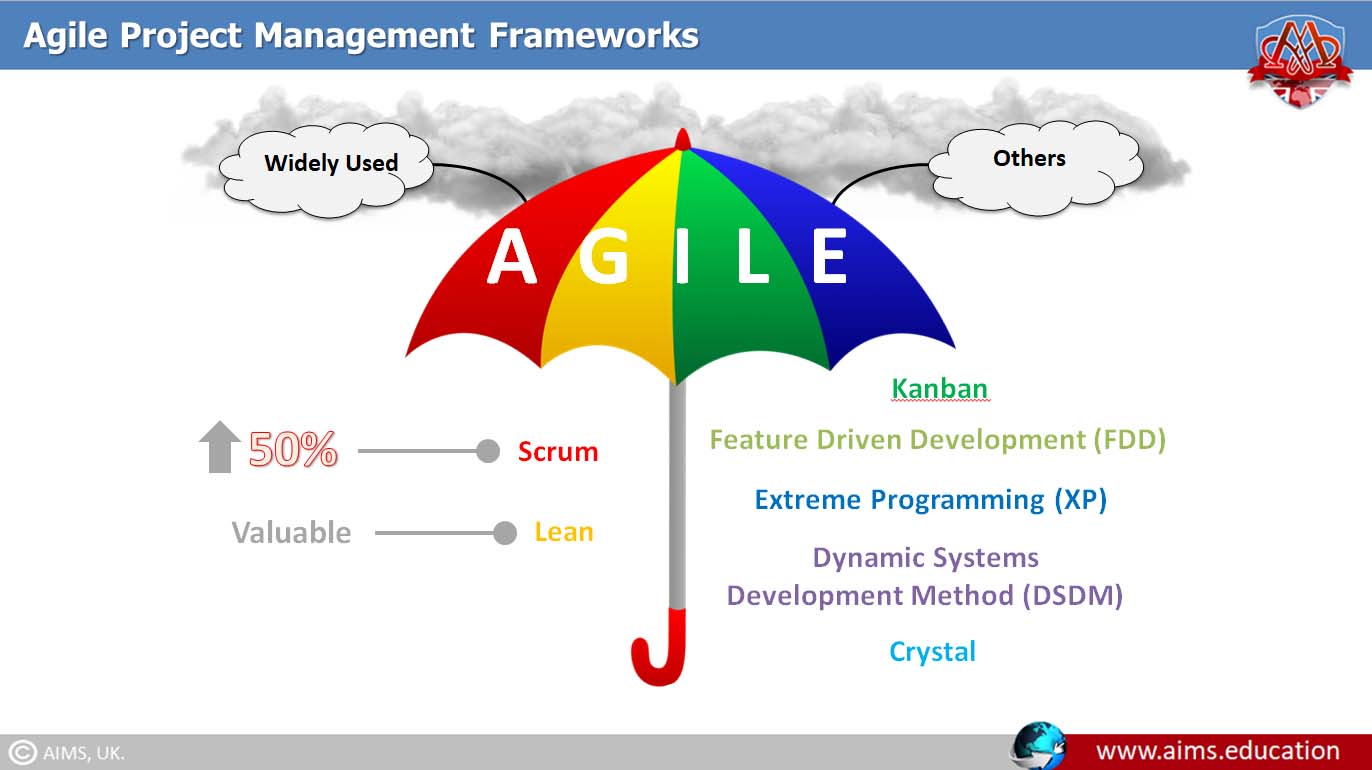
12 Principles of Agile Project Management
Agile management follows the following 12 principles, which form a set of guiding concepts that support project teams in implementing Agile projects. These concepts are used to implement agile methodologies in projects.
- Principle # 1: Satisfying customers is the top priority.
- Principle #2: Welcome changing requirements, even when they are late in development.
- Principle #3: Deliver working software frequently.
- Principle #4: Development and business work together.
- Principle #5: The primary measure of success is working software.
- Principle #6: The team regularly reflects on work, tunes, and adjusts its behavior.
- Principle #7: Build projects around motivated people.
- Principle #8: Face-to-face is the most efficient and effective method of conveying information to and within development teams. Communication.
- Principle #9: Continuous attention to technical excellence and good design.
- Principle #10: Simplicity in agile project management.
- Principle #11: Best architecture requirements and designs emerge from self-organizing and artificially organized teams.
- Principle #12: Agile processes promote sustainable development.
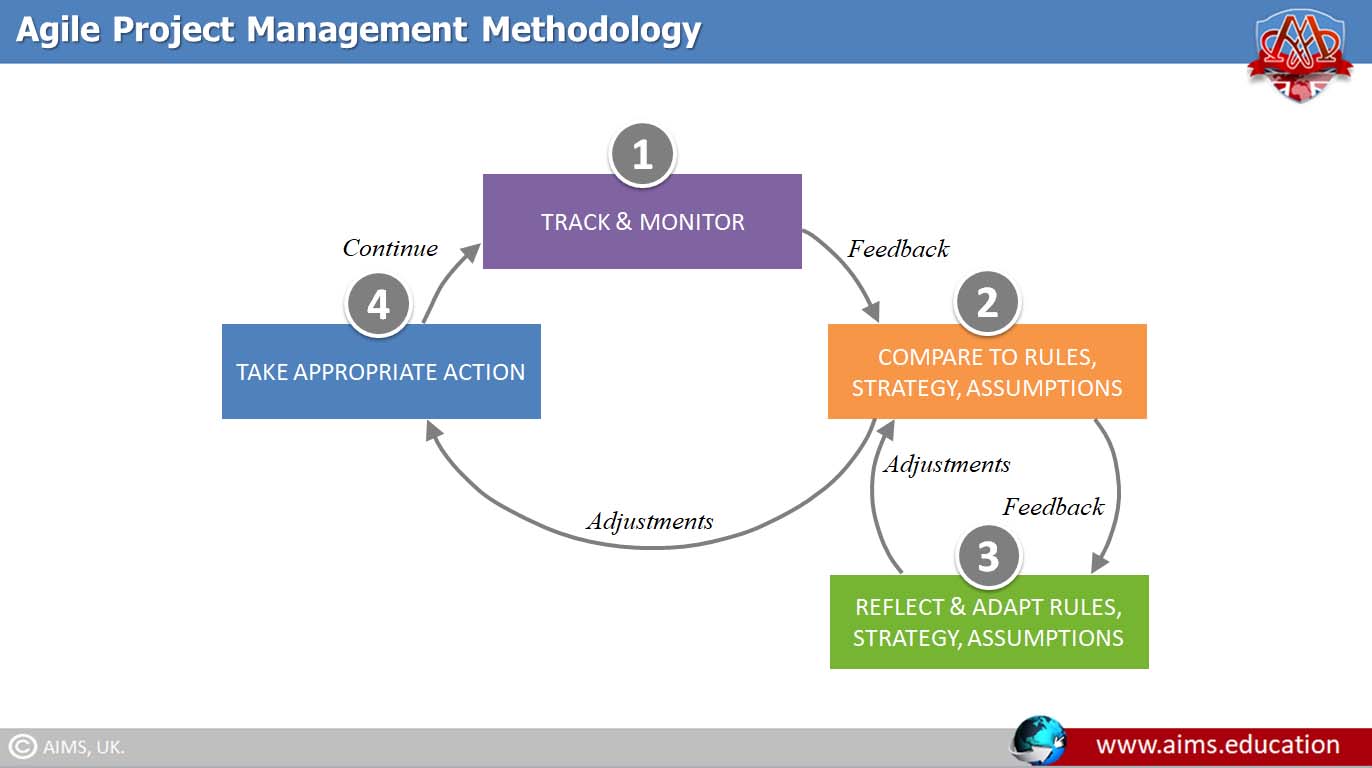
Understanding the Agile Project Management Methodology
While Agile offers a broad philosophy for managing projects with flexibility and interactiveness, teams can adopt several specific methodologies within the Agile umbrella. These methodologies are:
- Scrum.
- Lean.
- Kanban.
- Extreme Programming (XP).
We will take a deeper look into Agile Scrum and Agile Lean.
1. Agile Scrum
Scrum is an Agile project management way. Scrum project management is often perceived as a methodology but rather than viewing scrum as methodology, think of it as a framework for managing a process.
- Scrum provides a small set of rules that create just enough structure for teams to be able to focus their innovation on solving what might otherwise be an insurmountable challenge.
- Scrum occurs in small pieces, with each piece building upon previously created pieces.
- Scrum emphasizes empirical feedback, team self-management, and striving to build properly tested product increments within short iterations. This emphasis on an ongoing assessment of completed work is largely responsible for its popularity with managers and developers alike, but what allows the scrum methodology to really work is a set of roles, responsibilities, and meetings that never change.
- If scrum’s capacity for adaption and flexibility makes it an appealing option the stability of its practices give teams something to lean on when development gets chaotic.
- Scrum provides structure to allow teams to deal with that difficulty. However, the fundamental process is incredibly simple and at its core is governed by three primary roles.
- Product owners determine what needs to be built in the next 30 days or less. The development team builds, which has a good understanding of agile project management and what is needed in 30 days or less. The team then demonstrates what it has built. Based on this demonstration, the product owner determines what to build next.
- Scrum masters ensure this process happens as smoothly as possible and continually help improve the process, the team and the product being created.
Agile Lean
The core idea is to maximize customer value while minimizing waste—simply lean means creating more value for customers with fewer resources.
- A Lean Organization understands customer value and focuses its key processes on continuously increasing it.
- The ultimate goal is to provide perfect value to the customer through a perfect value creation process that has zero waste.
- To accomplish this, Lean thinking changes management’s focus from optimizing separate technology assets and vertical departments to optimizing the flow of products and services through entire value streams that flow horizontally across technologies, assets, and departments to customers.
- Eliminating waste along entire value streams instead of at isolated points creates processes that require less human effort, space, capital, and time to produce products and services at far lower costs and with fewer defects than traditional business systems.
- Companies are able to respond to changing customer desires with high variety, high quality, low cost, and very fast throughput times. Information management also becomes much simpler and more accurate.
- Lean is a translation of Lean supply chain or manufacturing to the software development domain, adapted from the Toyota Production System, and focuses on seven principles.
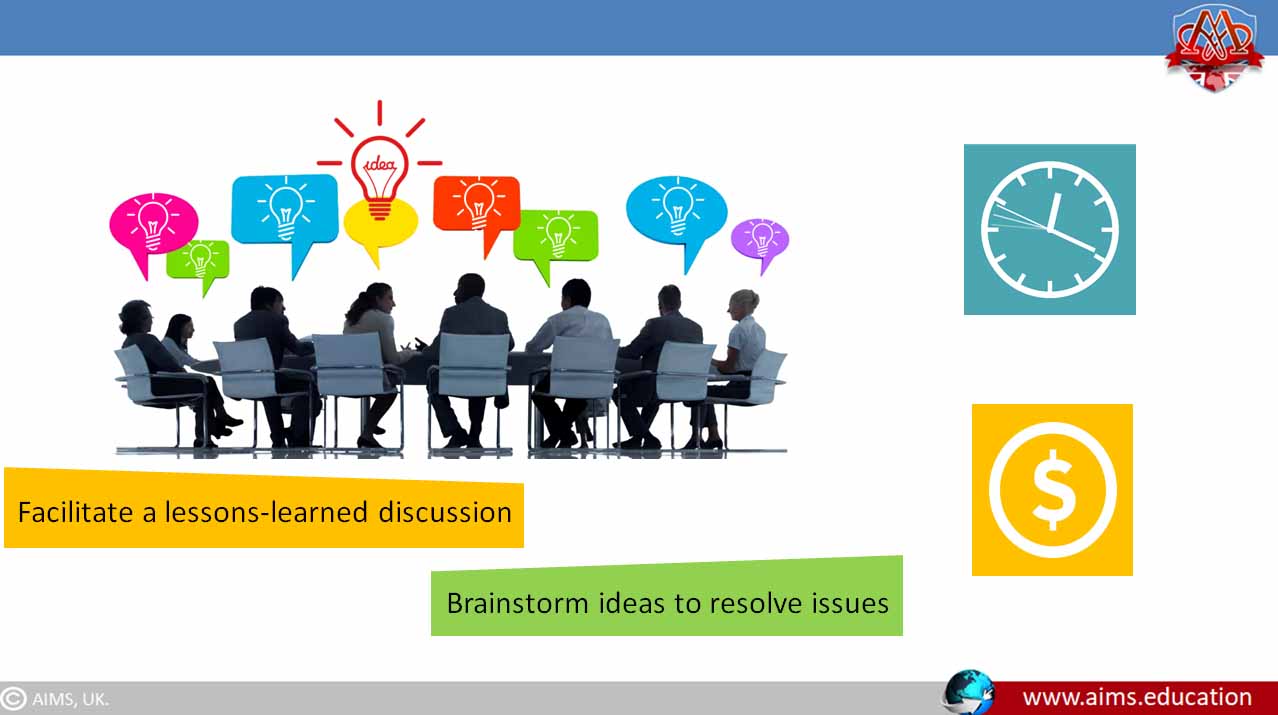
How to Earn Agile Project Management Expertise?
Agile project management benefits professionals seeking for a project management qualifications. By emphasizing flexibility and iterative progress, Agile project management methodologies align with principles taught in Online MBA Project Management. AIMS’ Project Management Certificate grounded in Agile practices marks a pivotal step in demonstrating a commitment to excellence and continuous improvement in the agile project management field.
Frequently Asked Questions
Q1: What is Agile project management?
Agile is an iterative approach that delivers value in small increments, relying on customer feedback, collaboration, and continuous improvement.
Q2: How does Agile differ from Waterfall?
Agile is adaptive and time-boxed with self-organising teams, while Waterfall is plan-driven, scope-based, and managed top-down.
Q3: What are the Agile life-cycle phases?
Envision, Speculate, Explore, Adapt, and Close—from vision to iterative delivery and orderly closure.
Q4: What happens in the Envision phase?
Teams align on a product vision, scope, constraints, and delivery approach using tools like an elevator statement and vision box.
Q5: What occurs in Speculate and Explore?
Speculate turns vision into a backlog and high-level plans; Explore delivers and tests features as user stories.
Q6: How does the Adapt phase work?
Teams inspect functionality, quality, performance, and status, then take adaptive actions to maximise value.
Q7: What are the 12 Agile principles?
Customer focus, embrace change, frequent delivery, collaboration, working software, reflection, motivated teams, face-to-face communication, technical excellence, simplicity, emergence, and sustainability.
Q8: What roles exist in Scrum?
Product Owner, Development Team, and Scrum Master—together enabling prioritisation, delivery, and facilitation.
Q9: How does Lean relate to Agile?
Lean drives value by removing waste across value streams, complementing Agile’s iterative delivery.
Q10: When should I choose Agile PM?
When requirements are evolving, rapid feedback is needed, and incremental delivery reduces risk compared to rigid plans.
